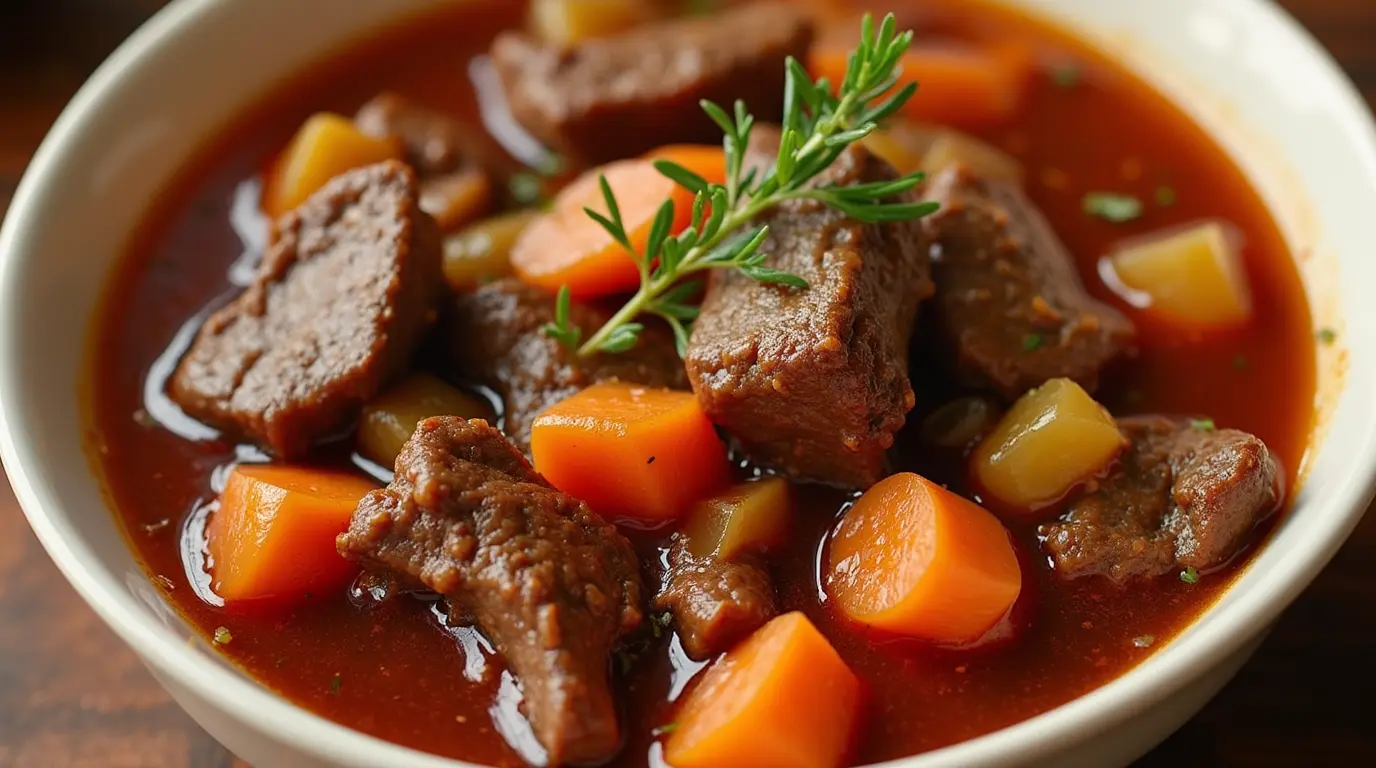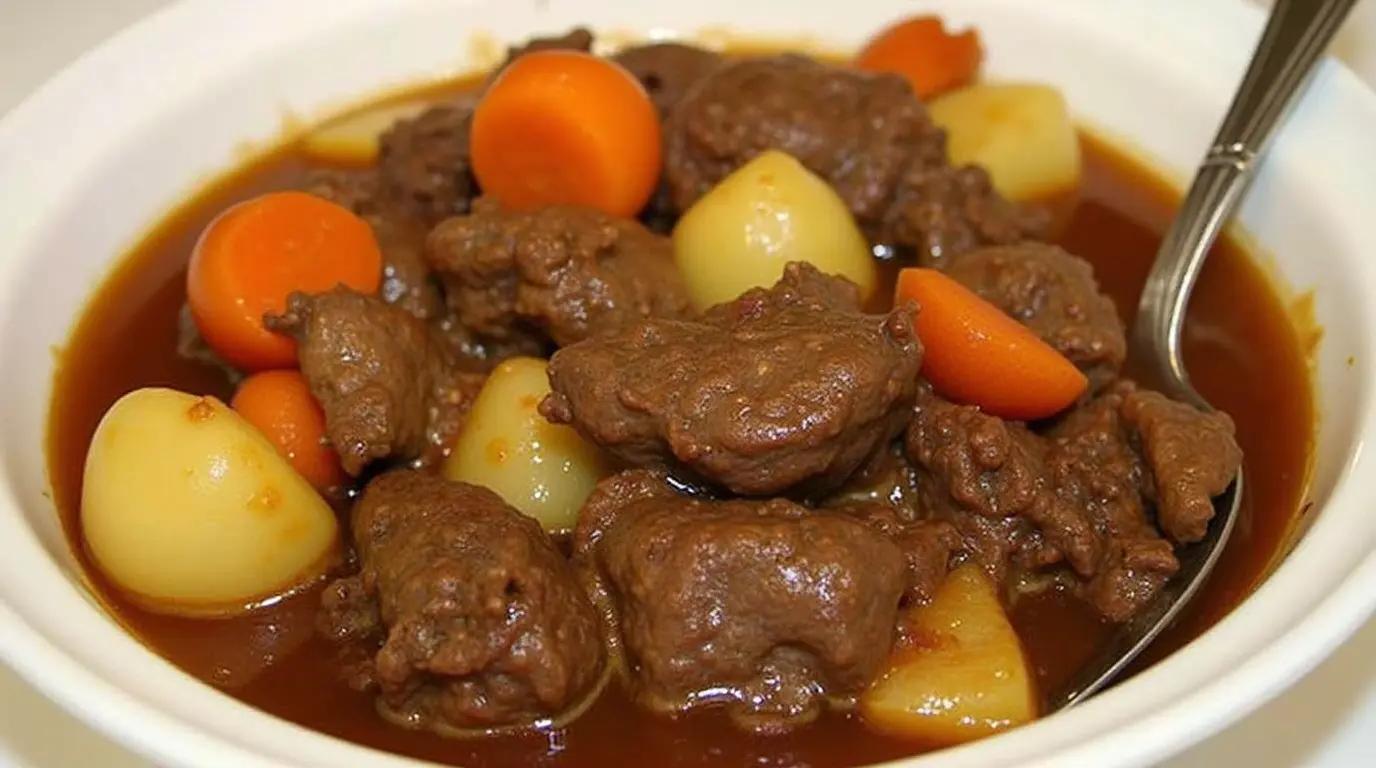Beef Stew Seasoning is the key to transforming a simple pot of stew into something deeply flavorful and comforting. Instead of relying on store-bought packets, this homemade spice blend combines bold herbs and spices you likely already have in your pantry. It’s quick to make, easy to store, and guaranteed to elevate every beef stew, whether you’re cooking on the stovetop, in a crockpot, or using an Instant Pot.
Table of Contents
Ingredients and Directions
Ingredients (Homemade Spice Blend)
- 1 tablespoon onion powder
- 1 tablespoon garlic powder
- 1 tablespoon paprika (smoked or sweet)
- 1 teaspoon dried thyme
- 1 teaspoon dried rosemary, crushed
- 1 teaspoon ground black pepper
- ½ teaspoon dried parsley
- ½ teaspoon celery seed (optional)
- 1 teaspoon kosher salt (adjust to taste)
- ½ teaspoon crushed red pepper flakes (optional, for heat)
Zurban Tip:
Lightly grind the rosemary and celery seed before mixing to release maximum flavor and improve texture.
Directions:
Use 2 to 3 tablespoons of seasoning per 2 pounds of beef. Add it while browning the meat or stir it into the stew as it simmers.
Add all the spices to a small bowl or jar. Stir or shake well to combine.
Store the seasoning mix in an airtight container in a cool, dry place for up to 6 months.
What Makes a Great Beef Stew Seasoning?
A well-crafted beef stew seasoning is the heart of a flavorful stew. It’s not just about tossing in a few spices, it’s about balancing savory, sweet, and earthy notes to create depth and harmony in every bite.
Balancing Flavors:
- Savory: Salt, garlic powder, and onion powder enhance the natural umami of the beef.
- Sweet: A small touch of sweetness (like a carrot or a pinch of sugar) balances the richness.
- Earthy: Herbs like thyme and rosemary add depth and warmth.
Fresh vs. Dried Ingredients:
- Fresh herbs provide brightness but are best added at the end of cooking.
- Dried herbs are stronger and perfect for long-simmered dishes like stew.
Layering Flavor:
- Rub the seasoning onto the meat before browning to build flavor from the start.
- Browning the meat adds caramelized depth.
- Simmering blends all the spices into one rich, hearty stew.
Creative Uses for Beef Stew Seasoning
Slow Cooker Beef Stew
Add 2–3 tablespoons of seasoning directly to the pot. Combine with broth, beef, and vegetables. Let it cook low and slow for rich flavor.
Instant Pot Stew
Use the blend to season the meat before searing. Add broth and vegetables. Pressure cook for a quick, hearty stew.
Gravy Base
Mix 1 tablespoon of seasoning with pan drippings. Add a bit of flour. Simmer until thickened into a flavorful gravy.
Roasted Vegetables
Toss chopped root vegetables with olive oil and 1 tablespoon of seasoning. Roast until golden and tender.
Marinade Rub
Mix seasoning with oil and vinegar. Rub onto beef or use as a marinade before grilling or roasting.

Common Mistakes to Avoid
Even with the best seasoning blend, certain mistakes can dull the flavor of your stew. Avoid these pitfalls:
Overseasoning
Using too much can overpower the stew. Start with 2 tablespoons, then adjust to taste.
Skipping the Browning Step
Adding the seasoning without searing the meat first misses out on deep, caramelized flavor.
Not Crushing Herbs
Leaving rosemary or celery seed whole can make the blend gritty. Lightly crush them for a smoother texture.
Storing It Wrong
Exposure to light, air, or moisture reduces potency. Always use airtight containers and keep in a cool, dark place.
Looking for the perfect base to pair with this blend? Try our Chicken Bone Broth Recipe for added depth and nourishment.
Variations of Beef Stew Seasoning
Smoky Blend
Add ½ teaspoon smoked paprika and a pinch of chipotle powder. Perfect for a bold, campfire-style flavor.
Herby & Mild
Omit the red pepper flakes. Increase dried parsley and thyme for a softer, herb-forward seasoning ideal for sensitive palates.
Mediterranean Twist
Add ½ teaspoon dried oregano and a pinch of cinnamon. Great for stews with tomatoes, olives, or chickpeas.
Frequently Asked Questions
Can I turn this seasoning into a wet marinade?
Yes. Mix the dry seasoning with olive oil, vinegar, or lemon juice to create a quick and flavorful wet marinade for beef or vegetables.
Is this seasoning gluten-free?
Yes. All listed ingredients are naturally gluten-free. Just make sure your individual spice brands are certified if needed.
Can I use this blend for oven-baked dishes?
Absolutely. It works great on baked beef, casseroles, or even sheet pan meals. Just sprinkle over the ingredients before cooking.
What’s the best container for storing this blend?
Use a small airtight glass spice jar or a resealable container. Label it and keep it in a cool, dry cabinet away from sunlight.
Want to turn this blend into a full meal? Pair it with this Crock Pot Recipe with Ground Beef for a no-fuss dinner.
Final Thoughts
Homemade beef stew seasoning is a game-changer. It gives you full control over flavor, skips the additives, and brings out the best in every pot of stew. Whether you’re simmering all day or making a quick batch in the Instant Pot, this blend delivers comfort and depth with every bite.
💬 What’s your secret ingredient in beef stew?
Tell us in the comments, we’d love to hear how you make it your own!

